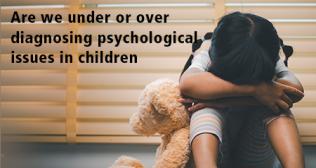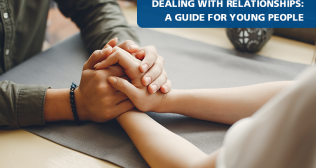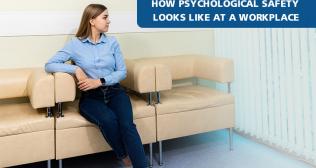
Ocd Awareness Week

Understanding OCD
Minor obsessions and compulsions are familiar to almost everyone. Many of us at times have experienced being filled with thoughts about an upcoming performance or exam, or not being able to stop wondering whether you forgot to turn off the stove or lock the door. Some of us may feel better when we avoid stepping on cracks, turn away from black cats, or arrange our closet in a particular manner. Sometimes these little rituals can also be comforting during times of stress, like humming a tune may be releasing tension and repeating religious or cultural rituals such as counting rosary beads. We could term these as habits, which are not necessarily leading to a significant interference in our functioning.
However, imagine a situation when the mind gets stuck on a certain thought or image, and this thought or image keeps getting replayed over and over again, no matter what you do. You don’t want to think these thoughts, and their intrusion worries you, and makes you feel anxious, urging you to respond or react by doing something to protect yourself. And while you may recognize that the fear doesn’t make sense, yet it feels real and intense. This experience could be attributed to the presence of an Obsessive Compulsive Disorder (OCD).
Identifying Signs and Symptoms
Obsessions are thoughts, images or urges that occur again and again, and feel out of the person’s control. The person does not want to have these ideas, and finds them disturbing, usually realizing that they don’t make sense. They make the person feel uncomfortable, bringing a fear, disgust, doubt, or a feeling that that things have to be done in a way that is "just right." Common examples include a fear of contamination, experiencing unwanted sexual thoughts which are undesirable and invoke feelings of guilt and shame, religious obsessions, having excessive concerns about physical health (of self or others), etc.
On the other hand, compulsions are repetitive behaviours or thoughts that a person engages in to neutralize, counteract, or make their obsessions go away. They rely on the compulsion as a temporary escape, and they try to avoid situations that trigger their obsessions. Some examples could include Washing and cleaning in excess without satisfaction, repeatedly checking, repetitive actions, mental compulsions (counting, praying, etc.), hoarding or collecting objects which are not of any use to the person, ordering, arranging or setting things in efforts to eradicate the discomfort of seeing things disordered, or telling or asking for reassurance repeatedly.
These obsessions and/or compulsions typically take a reasonable amount of time (more than 1 hour per day) and get in the way of important activities the person values (socializing, working, going to school, getting ready, etc.).
Treatment and Seeking Help
Obsessive compulsive disorder is a treatable illness, and professional help is irreplaceable. The person suffering is often ridiculed for a lack of self-control, and may even be snubbed by others. Often people may choose to hide their symptoms, in fear of embarrassment or stigma. With mounting evidence that obsessive compulsive disorder is largely determined by biological factors, pharmacotherapy, behaviour therapy, or a combination of both has been found to be effective in significantly reducing the symptoms of patients with obsessive compulsive disorder. The best clinical outcomes occur when SSRIs are used in combination with behavioural therapy, which include exposure and response prevention, desensitization, thought stopping, flooding, implosion therapy, and aversive conditioning.
Categories
Clear allMeet the doctor

- Mental Health and Behavioural Sciences | Mental Health and Behavioural Sciences | Psychiatry | Clinical Psychology
-
21 Years
-
900



















